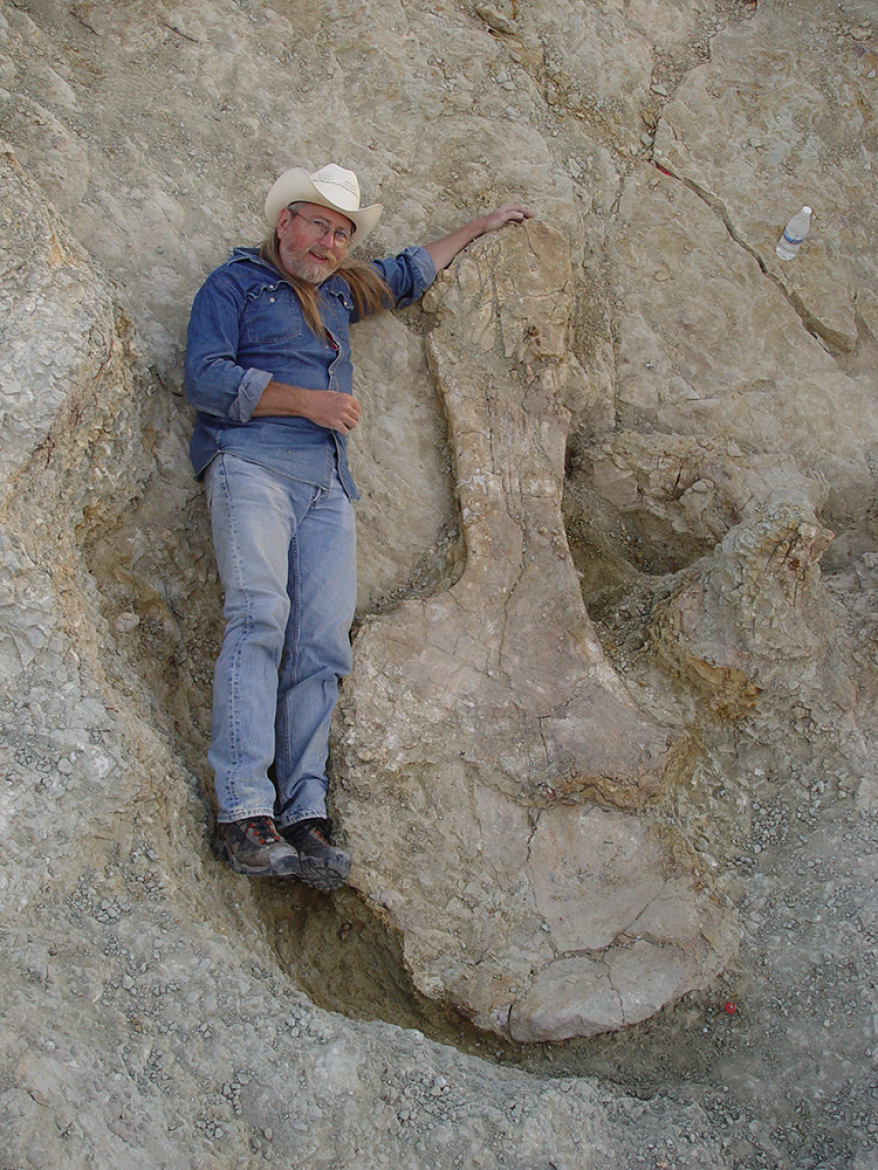Paleontology
What is Paleontology?
 Paleontology is the scientific study of life in the geologic past, based on examination of fossilized remains of once living organisms, such as tracks, bones, teeth, plants, and shells. Fossils are unique, nonrenewable resources that paint a ancient portrait of life on Earth. This history was written over billions of years in the pages of sedimentary rock layers, where fossils are entombed until exposed by erosion or other shifts in the Earth.
Paleontology is the scientific study of life in the geologic past, based on examination of fossilized remains of once living organisms, such as tracks, bones, teeth, plants, and shells. Fossils are unique, nonrenewable resources that paint a ancient portrait of life on Earth. This history was written over billions of years in the pages of sedimentary rock layers, where fossils are entombed until exposed by erosion or other shifts in the Earth.
What are fossils?
Fossils are any evidence of past life, including:
Traces: impressions, burrows, trackways.
Plants
Invertebrates: animals mainly known from shells
Vertebrates: animals with bone, cartilage or teeth
Microfossils: very small organisms that require magnification to identify
Is paleontology the same as archeology?
No. They are two distinct yet somewhat similar sciences.
Paleontology is the study of fossils, such as shells, plants, tracks, bone, wood, and animals.
Archeology is the study of human remains and artifacts, such as historic homesteads, pottery, stone tools, and rock art. Remember, artifacts begins with ‘art’; something created by humans.
There are important legal differences in how paleontological resources (fossils) and archeological resources (human remains and artifacts) are managed on Federal lands.
What is the Forest Service role?

Fossils are known or have potential to occur on roughly 50 percent of lands managed as national forests and grasslands. Fossil-bearing sedimentary rocks are often well exposed in the arid lands, such as the Great Plains and the Western U.S. One example is a 150-million-year-old dinosaur track site – the largest in North America – on the Comanche National Grassland in Colorado.
Preserving and protecting special paleontological areas is key to holding onto a part of the geologic past to study now and in the future. Once a paleontological resource disappears, that unique piece of Earth’s history is gone forever. The agency requires that anyone who wants to study fossils in the field must obtain a paleontological permit to ensure the integrity of the study and that any discovery be available to the scientific community. When someone unearths a fossil, they are the first person to see it. Scientific and ethical responsibilities go along with these discoveries.
What happens when fossils are unearthed?
Fossils are preserved for research, education, and scientific values. They are kept in non-federal partner museums, places where specialized staff know about long-term care of fragile fossils. In museums, scientists and the general public can learn more about the story of life on Earth. The public can educate themselves through interpretive information, visiting displays in museums, or getting involved with professionally conducted fossil collection opportunities.
Can I collect fossils?
Forest Service regulations allow for casual collecting of a reasonable amount of common invertebrate or plant fossils without a permit. Casual collecting is a privilege that carries with it the responsibility to know the rules, including knowledge of the terms “common”, “reasonable amount”, and “negligible disturbance”. See the Forest Service regulation for casual collecting (36 CFR subpart 291.11). You are responsible to know where casual collecting is allowed and if a particular fossil occurrence is subject to casual collecting. If you are unsure whether a particular invertebrate or plant fossil meets the conditions for casual collecting, a good rule of thumb is to photograph it and seek advice from a Forest Service office. This ensures that unusual or exceptional fossils are managed for the benefit of science and the enjoyment of all visitors. Contact the national forest or grassland to learn more about areas that may be well suited for casual collecting and how you might assist in reporting fossil locations to scientists.
Are there volunteer opportunities?

Volunteers are an integral part of what we do every day. Volunteers and students work with our paleontologists and partners to discover, collect, and conserve important fossil specimens. The Forest Service conducts volunteer projects for scientific and educational purposes. Connect to Passport in Time, or check with local museums to find out about volunteer opportunities.
Where can I learn more?
The best way is to visit some of our exciting sites, where you can see fossils first-hand vestiges. In the meantime, read our blogs:
Biting Down on the Origin of a Tooth
Dinosaur Parts Unearthed on Colorado Grassland
Digging Those Dinosaurs on National Forests, Grasslands
46 Million-Year-Old Eocene World in a Forest
Buried Alive: The Petrifying True Story of a Forest Turned to Stone
Volunteers Have Fossil Field Find on Forests and Grasslands
